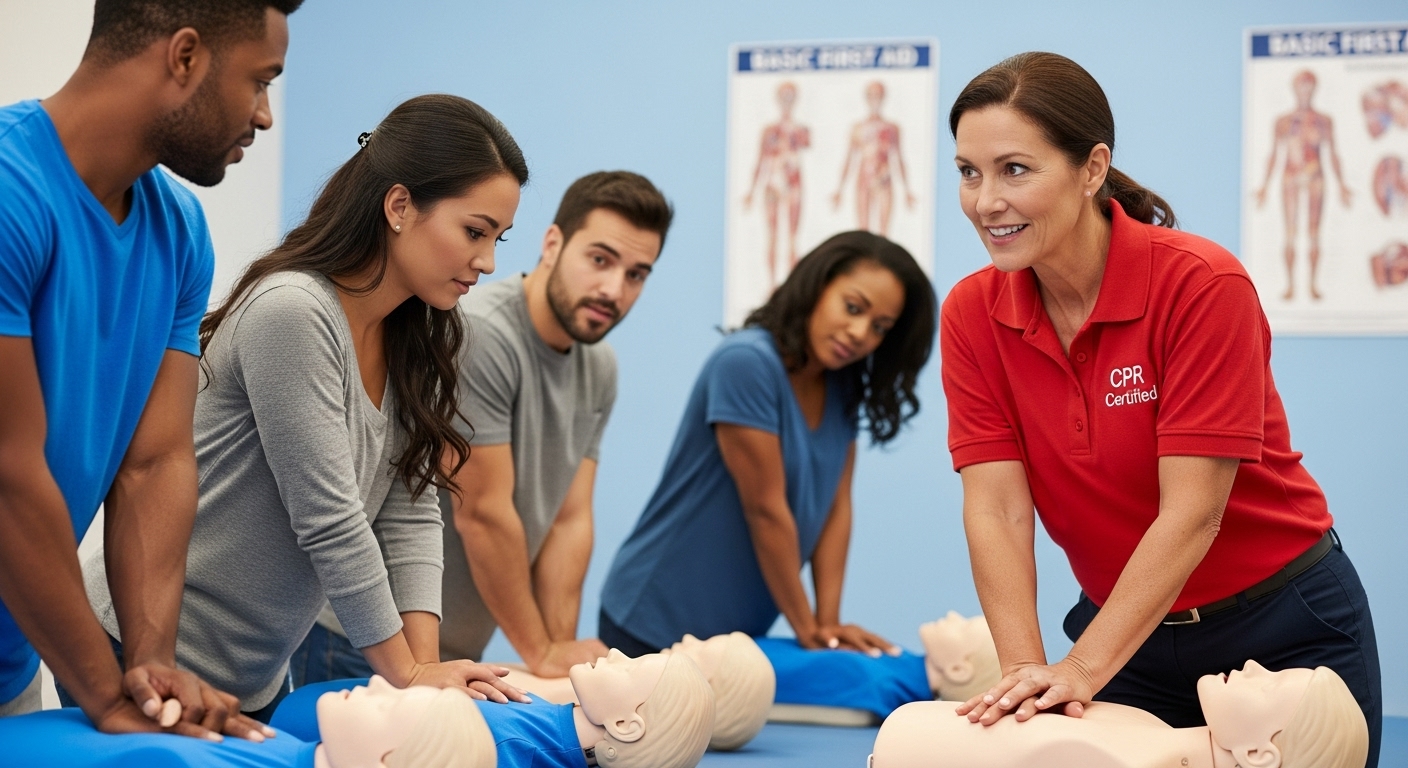As Australia’s population ages, the demand for skilled aged care professionals continues to rise. Aged care safety courses play a critical role in equipping workers with the knowledge and skills necessary to provide safe, high-quality care to seniors. This article will explore the importance of aged care safety courses, the key components of these programs, their benefits, and how they contribute to improving the overall quality of care in aged care settings.
The Importance of Aged Care Safety
Aged care safety is paramount to ensuring the well-being of elderly individuals. The aged care sector encompasses various services designed to support the physical, emotional, and social needs of older adults. Safety in aged care involves protecting seniors from harm, including physical injuries, emotional distress, and neglect. The importance of safety in aged care can be highlighted in several key areas:
Physical Safety
Elderly individuals often face a higher risk of falls, medication errors, and other accidents due to age-related health issues. Aged care safety courses address these risks by teaching staff how to identify hazards, implement preventive measures, and respond effectively to emergencies.
Emotional Well-being
Safety extends beyond physical protection. Emotional and psychological safety is essential for fostering a supportive environment for seniors. Aged care workers are trained to recognize signs of distress, anxiety, or depression and respond appropriately to ensure that residents feel safe and valued.
Compliance with Regulations
Australia has strict regulations governing the aged care sector, including the Aged Care Quality Standards. These standards emphasize the importance of safety and quality in care delivery. Aged care safety courses help workers understand these regulations and implement them in their daily practice.
Building Trust
Seniors and their families must trust that aged care providers will keep them safe and provide quality care. Training staff in safety protocols enhances this trust, leading to stronger relationships between caregivers and residents, as well as greater family satisfaction.
Key Components of Aged Care Safety Courses
Aged care safety courses typically cover a range of topics essential for ensuring the safety and well-being of elderly individuals. Here are some of the key components often included in these programs:
Risk Assessment and Management
Understanding how to assess risks in aged care settings is fundamental. Participants learn to identify potential hazards, evaluate their impact, and implement strategies to minimize risks. This includes conducting regular safety audits and maintaining a safe environment for residents.
Manual Handling Techniques
Many injuries in aged care result from improper manual handling. Courses provide training on safe lifting and transferring techniques to prevent injuries to both staff and residents. Participants learn how to use assistive devices, such as hoists and slings, effectively and safely.
Infection Control Practices
Infection control is critical in aged care, particularly in light of the COVID-19 pandemic. Workers are trained in hygiene practices, proper use of personal protective equipment (PPE), and infection prevention strategies to reduce the risk of outbreaks in care facilities.
Medication Safety
Medication management is a key responsibility of aged care workers. Courses cover safe medication practices, including proper storage, administration, and documentation of medications. Participants learn to recognize the signs of adverse drug reactions and how to respond.
Emergency Preparedness
Aged care workers must be prepared to respond effectively to emergencies, including medical crises, natural disasters, or other unexpected events. Courses teach emergency response protocols, first aid procedures, and evacuation plans to ensure the safety of residents during emergencies.
Communication Skills
Effective communication is vital in aged care settings. Workers learn how to communicate with seniors, their families, and other healthcare professionals clearly and compassionately. This includes understanding non-verbal cues and fostering a supportive environment for open dialogue.
Understanding Abuse and Neglect
Courses educate participants about recognizing and preventing elder abuse and neglect. Workers learn about their legal obligations to report suspected abuse and how to create a culture of safety and respect within aged care facilities.
Benefits of Aged Care Safety Courses
Investing in aged care safety courses offers numerous benefits for both workers and the seniors they serve. Here are some of the key advantages:
Enhanced Skills and Knowledge
Aged care safety courses provide workers with the necessary skills and knowledge to deliver high-quality care safely. This training empowers staff to make informed decisions and respond effectively to various situations they may encounter in their roles.
Improved Job Performance
With the right training, aged care workers can perform their jobs more effectively. Enhanced skills lead to greater efficiency, reduced errors, and improved overall performance in delivering care.
Reduced Workplace Injuries
By teaching safe practices and risk management strategies, aged care safety courses help reduce the likelihood of workplace injuries for both staff and residents. This creates a safer environment for everyone involved.
Increased Job Satisfaction
When aged care workers feel confident in their skills and knowledge, they are more likely to experience job satisfaction. This positive environment contributes to higher staff retention rates and a more stable workforce in aged care settings.
Better Outcomes for Residents
Ultimately, the goal of aged care safety courses is to improve the quality of care for seniors. Well-trained staff can provide safer, more effective support, leading to better health outcomes and an enhanced quality of life for residents.
Compliance with Industry Standards
Aged care safety courses help workers understand and comply with industry regulations and standards. This not only ensures the safety of residents but also protects organizations from potential legal issues and enhances their reputation in the community.
The Role of Technology in Aged Care Safety Courses
As technology continues to evolve, it plays an increasingly important role in aged care safety training. Here are some ways technology enhances these courses:
Online Learning Platforms
Many aged care safety courses are now available online, allowing participants to complete their training at their own pace and convenience. This flexibility is especially beneficial for working professionals who may have difficulty attending in-person classes.
Simulation Training
Advancements in simulation technology allow workers to practice their skills in realistic scenarios. Simulation training provides a safe environment for participants to learn how to respond to emergencies, perform manual handling, and administer medications without the risk of harming residents.
Mobile Apps for Training and Resources
Mobile applications can provide easy access to training materials, resources, and safety protocols. Workers can use these apps to refresh their knowledge on-the-go or access important information while on duty.
Telehealth and Remote Training
Telehealth technology enables aged care professionals to participate in remote training sessions, webinars, and workshops. This allows for continuous learning and skill enhancement without the need for travel.
The Future of Aged Care Safety Training
As the aged care sector evolves, safety training must adapt to meet emerging challenges. Here are some potential developments in aged care safety training:
Emphasis on Person-Centered Care
The shift toward person-centered care approaches will likely influence safety training. Future courses may focus more on understanding individual needs and preferences, ensuring that safety protocols are tailored to enhance the well-being of each resident.
Integration of Mental Health Training
As mental health awareness grows, integrating mental health training into aged care safety courses may become increasingly important. Understanding how to support the emotional well-being of seniors is essential for comprehensive care.
Focus on Diversity and Inclusion
As Australia becomes more diverse, aged care safety courses may incorporate training on cultural competence, ensuring that workers can provide respectful and effective care to individuals from various cultural backgrounds.
Continuous Professional Development
Aged care safety training will likely evolve into a model of continuous professional development, where workers engage in ongoing education and training throughout their careers to stay updated on best practices and emerging issues.
Increased Collaboration with Healthcare Professionals
Collaboration between aged care workers and other healthcare professionals will be essential for delivering holistic care. Future training programs may emphasize interprofessional education, fostering teamwork and communication among different disciplines.
Conclusion
Aged care safety courses are essential for ensuring the well-being of seniors and the safety of aged care workers. By providing comprehensive training in risk assessment, manual handling, infection control, and emergency preparedness, these courses equip professionals with the skills and knowledge necessary to deliver high-quality care. As the demand for aged care services continues to grow, investing in safety training will be crucial for enhancing the overall quality of care in the sector. By prioritizing safety, we can create a supportive and nurturing environment for older Australians, ensuring they receive the respect, dignity, and care they deserve.










